DL10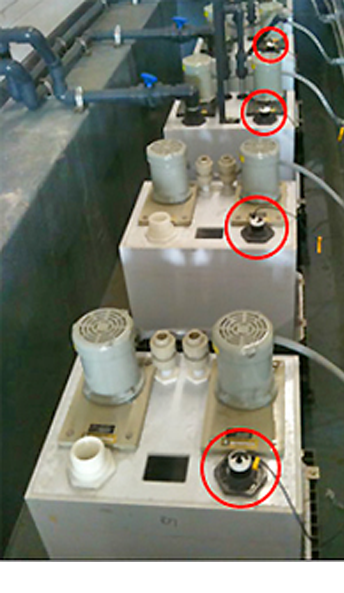
Quick ViewView Full Details |
Electroplating
is a process that uses electric current to reduce dissolved metal cations so
that they form a metal coating on an electrode or metal part. Hence, it changes
the surface properties of an object to improve its appearance, wear or corrosion
resistance. The basic electroplating process involves an alkaline cleaning,
acid pickling, electroplating and parts rinsing. During which, large quantities
of acidic wastewater are generated, laden with heavy metals. The wastewater
must be remediated and neutralized, prior to being released to the city sewer.
At this Midwest plating company, EchoPod ultrasonic level transmitters are
installed in each sump. The non-contact sensors provide continuous level data
to the PLC, which in turn, actuates the pumps to transfer the waste into
treatment. EchoPod is reliable plating lift station level measurement. |
DL24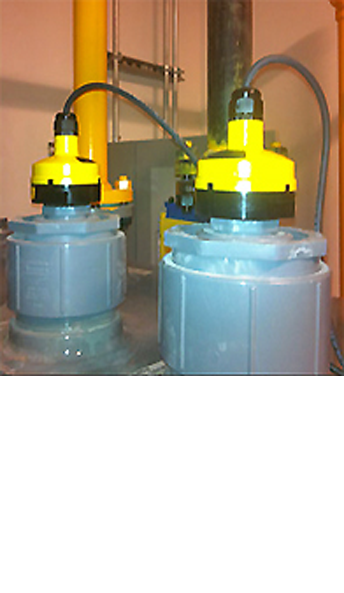
Quick ViewView Full Details |
Cloud
data centers are the backbone of todays business, and fail-safe redundancy to
protect their clients data and service uptime is a fundamental premise of their
business model. Customers expect 24/7 service and business disruption is
unacceptable. As such, data centers deploy contingency plans, equipment and
security to address threats from natural disasters, fires, terrorism and power
outages. Battery backup systems and power generators are basic equipment at any
center. In the event of power loss, they protect data and ensure service uptime
for 24-72 hours depending upon their diesel fuel supply. Generators are
regularly exercised to confirm their good working order. At this financial data
center, EchoPod ultrasonic level transmitters are installed in each diesel
storage tank. The non-contact sensors provide continuous level data to the
building’s automation system. When the level drops to 80% of full capacity, the
tanks are refilled. EchoPod is reliable diesel generator level measurement. |
LU27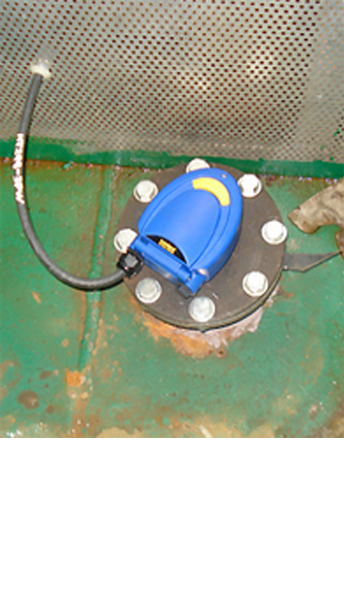
Quick ViewView Full Details |
Each
year, $9 trillion dollars of global trade, or about 85% of the world’s goods
are transported by ship across our oceans. Bulk carriers, cargo ships and oil
tankers are designed to transport enormous weight. Fully loaded, they have no
problem cutting through buffeting oceans and rocky seas. But, during cargo
on-load and off-load, the same ships are vulnerable to shifting loads and
imbalances that must be addressed by moving water ballast to maintain
stability. Ballast management is one of the many keys to safe seamanship, as
thousands of ballast gallons are typically moved while in port. Here, an
EchoSpan ultrasonic level transmitter is installed over each water ballast
tank. The non-contact sensor provides continuous level data to the ship’s PLC,
which in turn, automatically shifts ballast from one tank to another based upon
the angle of the ship. EchoSpan is reliable ship ballast level measurement. |
XP88-89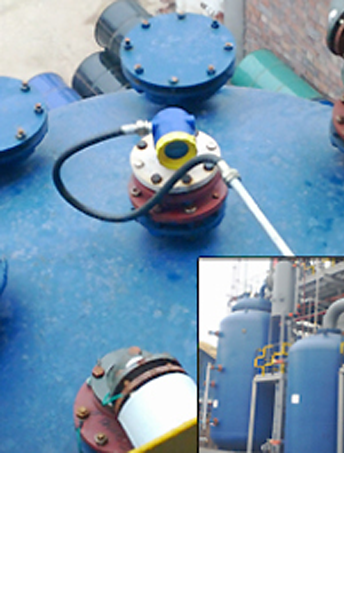
Quick ViewView Full Details |
The
global pharmaceutical industry develops about 3,000 new medicines a year,
addressing an array of health issues facing aging consumers. Given the extreme
pace of new product development, production facilities are constantly retooling
their manufacturing to meet the latest requirements. A relative constant is the
chemical storage, water treatment, chemical feed and wastewater treatment
equipment that supports their changing processes. At this US pharmaceutical
company, an EchoSafe explosion proof ultrasonic level transmitter is installed
on a sulfuric acid storage tank for inventory management. The non-contact
sensor is FM approved for use in hazardous locations, and provides continuous
level data to the PLC. EchoSafe is reliable hazardous level measurement. |
DL10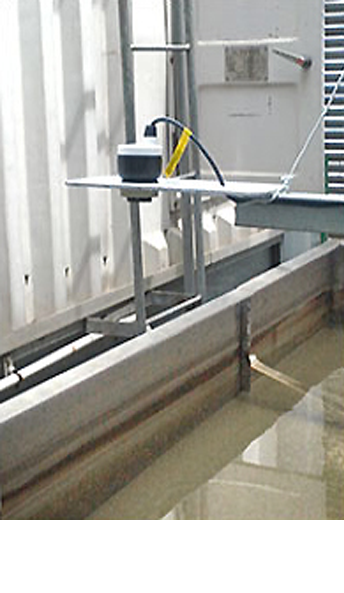
Quick ViewView Full Details |
The
Hotel and Motel Fire Safety Act of 1990 and National Fire Protection
Association NFPA standards require that all new multi-tenant buildings, 4
stories in height or more, must be fitted with fire sprinklers. The standards
also require high rise residential and commercial buildings to be outfit with
additional water storage capacity to ensure that sprinklers will have local
supply in the event that city water is cut off during the fire. Hence, water
storage tanks are now designed into high rises and architects attempt to
reclaim, treat and reuse available water where possible. At this New York
commercial high rise, rain water is captured on the roof, and periodically used
to refill the fire sprinkler storage tanks. Here, an EchoPod ultrasonic level
transmitter is installed over a collection. The non-contact sensor provides
continuous level data to the building’s automation system. EchoPod is reliable
fire sprinkler water level measurement. |
DL24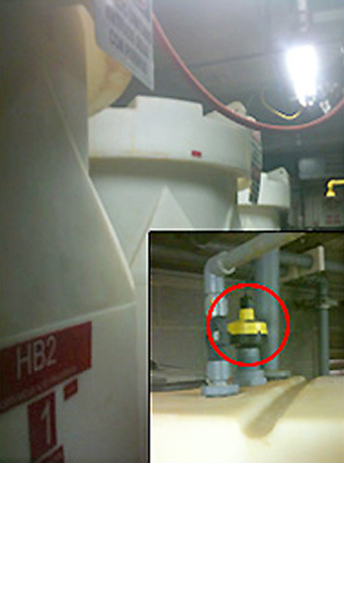
Quick ViewView Full Details |
About
50 billion chickens are consumed globally each year and the market is growing.
To meet the demand, processors are deploying new production methods and the
effectiveness and efficiency of their disinfection processes is a primary
concern. How do we prevent campylobacter, salmonella and listeria bacterial
contamination while killing, plucking, bleeding, eviscerating, cutting,
cleaning, packaging and shipping out more chickens this year? The proper
chemical treatment and washing techniques are critical to their success. This
US processor sprays trisodium phosphate (TSP), an alkaline compound, on
suspended chicken carcasses as they move down the production line. TSP
penetrates the chicken fat layers and disrupts the bacterial cells, killing
them on contact. Here, an EchoPod ultrasonic level transmitter is installed in
each TSP day tank. The non-contact sensor is connected to the PLC, which in
turn, automatically refills the day tank when low. EchoPod is reliable
disinfection level measurement. |
DL14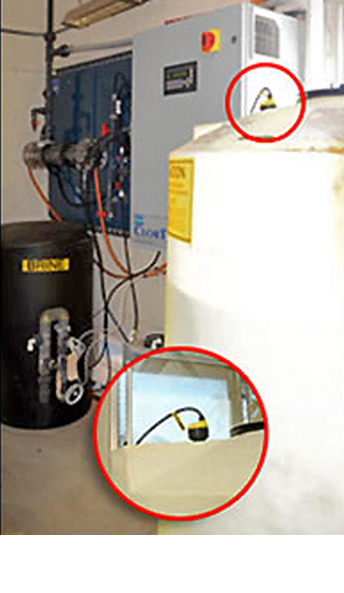
Quick ViewView Full Details |
US
metropolitan water districts deliver 850 million gallons of drinking water a
day. The water disinfection process often starts at the well pumping stations
where ground water is sourced, treated and pumped to the treatment plant. Given
the cost effectiveness of sodium hypochlorite versus ozone, chloramine and
ultraviolet, chlorine is the disinfectant of choice for many water districts.
Ultimately, those districts must decide whether they want to source chlorine
from a chemical distributor or generate it on-site. The decision making
criteria comes down to space, safety and capital expenditure. Suppliers can’t
deliver chemicals everyday, so bulk storage tanks are required, along with the
space to install and service them, and the higher liability associated with
offloading and storing large quantities of chlorine. Conversely, on-site
chlorine generators require 2-3 times the initial capital outlay, but they pay
for themselves within three years. At this pumping station, an EchoPod
ultrasonic level transmitter is measuring sodium hypochlorite that’s generated
and metered into the well water as its pulled from the ground. EchoPod is
reliable chlorine level measurement. |
LU27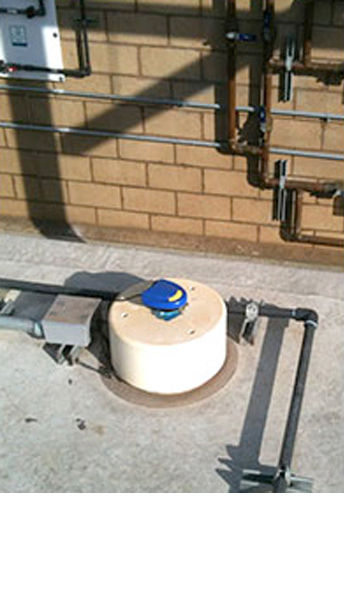
Quick ViewView Full Details |
United
States data centers consume 575 gigawatts or 2% of all the power consumed off
the nations grid. Half of that energy is used to power computers and the other
half is used to cool the computers. Two types of cooling systems are deployed
including the newer rack cooling and older room cooling systems. Rack cooling
systems work by directly cooling a computer rack versus the entire room. In
this system, a wall of chilled water passes inches from the racks, neutralizing
the heat released from the back of the servers. Rack cooling is highly
efficient and cost effective. At this new US data center, chilled water
continuously circulates between two underground concrete bulk storage tanks and
the server room. An EchoSonic ultrasonic level transmitter is installed in each
storage tank. The non-contact sensors provide continuous level data to the PLC.
EchoSonic is reliable chilled water level measurement. |
DL14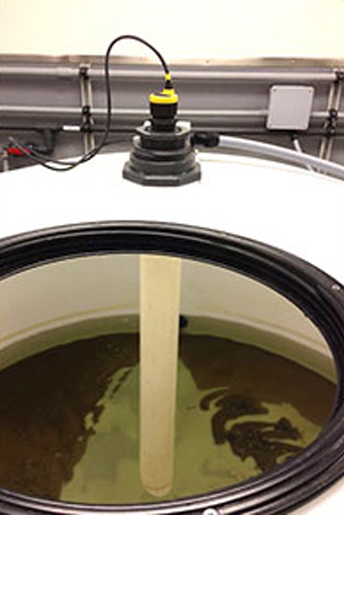
Quick ViewView Full Details |
Global
printed circuit board (PCB) sales in 2015 were $58.6 billion and the average
PCB bill of materials represents 3.2% of every electronic device sold. PCB’s
mechanically support and electrically connect, electronic components using
conductive tracks etched from copper sheets and non-conductive epoxy substrate.
The most common etchants are ferric chloride, cupric chloride and hydrochloric
acid blended with cupric chloride. At this PCB manufacturer, four day tanks are
being monitored by EchoPod ultrasonic level transmitters. Hydrochloric acid is
pumped into the day tanks and mixed with anhydrous cupric chloride, creating an
acidic green solution. A standpipe has been installed to minimize the effects
of vapor and agitation on the sensor as the batch is blended. The non-contact
sensors deliver continuous level data to the PLC. EchoPod is reliable PCB
etchant level measurement. |
LU20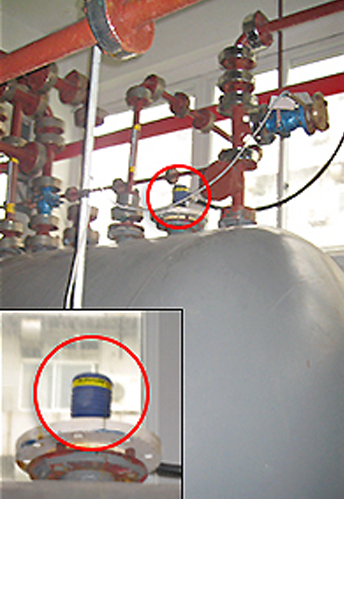
Quick ViewView Full Details |
Crude
oil is an essential commodity used in the refinement of gasoline. The majority
of gasoline is derived from petroleum naphtha, an intermediate hydrocarbon
liquid. Petroleum naphtha has low octane ratings that must be desulfurized and
then catalytically reformed to produce high-octane gasoline. To do so,
petroleum naphthas are typically broken down using toluene, an aromatic
hydrocarbon that is widely used as industrial feedstock or solvent which is
capable of dissolving paints, thinners and sealants. In gasoline, toluene
dissolves the sulfur, thus raising the octane to appropriate levels for use in
combustible engines. In this chemical plant, toluene is produced and contained
in a bulk tank for later use in petroleum refining processes. Toluene is a
highly volatile liquid that requires instruments with hazardous certification.
The intrinsically safe EchoTouch ultrasonic level transmitter was chosen for
this application, and combined with an intrinsically safe DataLoop level
indicator for hazardous level measurement and indication. |


